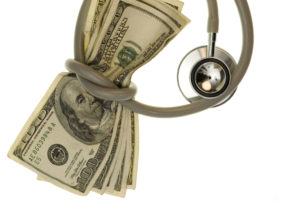 As Covid-19 volumes decrease and staff begins to heal from the trauma of the past year, many healthcare leaders will reflect on important lessons learned. An unfortunate reality rapidly surfacing for healthcare leaders today is staffing won’t get any easier. Research predicts a mass exodus of healthcare workers due to burnout, accelerated retirement and natural attrition. Now more than ever, analyzing your hospital’s employer brand and reputation is a critical component for building up your workforce.
As Covid-19 volumes decrease and staff begins to heal from the trauma of the past year, many healthcare leaders will reflect on important lessons learned. An unfortunate reality rapidly surfacing for healthcare leaders today is staffing won’t get any easier. Research predicts a mass exodus of healthcare workers due to burnout, accelerated retirement and natural attrition. Now more than ever, analyzing your hospital’s employer brand and reputation is a critical component for building up your workforce.
According to The Society for Human Resource Management, “An employer brand is essentially what the organization communicates as its identity to both potential and current employees.” Because 80% of HR leaders think an employer brand plays a significant role in hiring talent, organizations make concerted efforts to develop tangible and intangible benefits to achieve the distinction as a “great place to work.”
But it’s so much more than getting a fancy badge to put on your website and an annual report; a strong employer brand impacts the bottom line. LinkedIn estimates that organizations with a strong employer brand had a 50% lower cost per hire and 28% reduction in turnover. When the average annual cost of RN turnover for a hospital is million, a 28% reduction in turnover could save $1.37 million.
In fact, a hospital’s employer brand and the experiences of contingent workers impacted cost during the Covid-19 pandemic. For the healthcare systems and facilities that participate in our managed services program (MSP), we found that clients whose hospitals received higher net promoter scores, or had a higher likelihood to be recommended as a great place to work by a contingent worker, paid lower bill rates for contingent labor throughout the pandemic than our clients whose hospitals received lower NPS.
At the start of the Covid-19 wave in April 2020, hospitals in our high NPS group had bill rates 31% lower than national average rates, while our low NPS group’s bill rate averaged 21% higher than the national average. During the peak of Covid-19 in January 2021, there were 30,000-plus job openings for travel clinicians and hospitals raised rates dramatically to meet the demand. However, hospitals in our high NPS group continued to secure quality clinicians at bill rates 8% lower than the national average. On the contrary, the hospitals in our low NPS group paid rates 11% higher than the high NPS group and higher than national average.
Our data demonstrates that travel clinicians are willing to trade higher rates for a positive work experience at a hospital with a highly regarded employer brand and reputation. But on the flip side, data also suggests a health system or hospital known for its negative experiences will have to pay higher rates to incentivize travelers to take an assignment at those facilities.
As health systems deal with ongoing financial burden constraints, having a strong employer brand and a high net promoter score can save your hospital money and positively impact your contingent labor program. Using an MSP for your contingent labor program is a holistic approach to workforce solutions. More than just filling job requisitions, your MSP provider serves as a true partner in optimizing contingent labor utilization and cost efficiencies, and provides insight to improve your hospital’s employee brand and experience.








